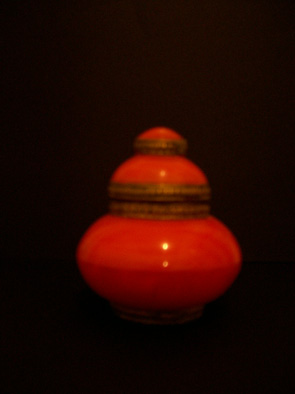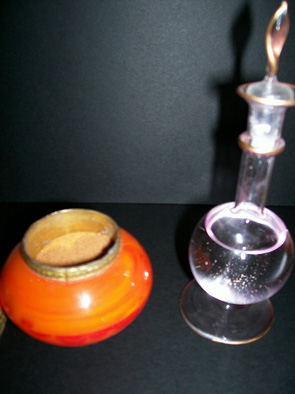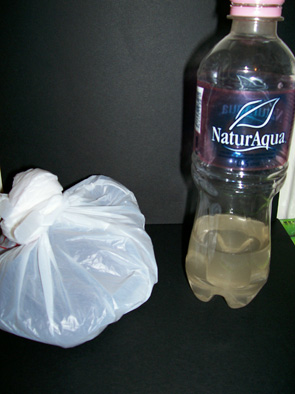ruth kennedy

together parts and pieces of theoretical arguments concerning the nature of things and their possession, it is possible to arrive at a synthesis in which there are real motivations for owning particular objects and that these motivations, as well as the ensuing reappropriation of the object, carry implications for both subject and object. The theoretical "gifts" from scholars of such topics along with an analysis of the possession and reappropriation of natural phenomenon in miniature can illuminate dynamics present between subject and object.
Natural phenomenon such as lakes, forests, deserts, stones, etc. can be in any number of classification schemes related to objects. For instance, they are very often used as commodities in the forms of waterways, sea ports, tourism, and the extraction of natural resources for human use. Nature has also often been sacralized and there are many instances of sacred rivers, lakes, mountains, etc. in historical and anthropological literature. In addition, the powers of nature are often accorded agency and human like qualities revealed by expression such as "majestic mountains" and "fierce oceans". This multiplicity of uses and conceptualizations of nature testifies to its vital importance to human kind. In many ways, it is possible to assert that humans are primaly connected to nature in that no one has ever known life without it and it has the power to dramatically affect our lives for better or for worse. An interesting path through which to analyze the meanings behind nature and its possession of or by humans is through the example of natural phenomenon as souvenirs.


During the course of two occasions of anthropological field work, I somehow forged a connection with aspects of the natural environment. These parts of nature came to signify the places themselves and as such became my most valued souvenirs and are now amongst my most valuable possessions. I now own a little piece of the Sahara Desert and a dozen or so ounces of the Danube River. While conducting research in both Morocco and Hungary, these dramatic features of the natural environment came to symbolize both general and personal qualities. Upon my departure, I felt compelled to take some of it with me as a reminder, as a conduit through which to transcend place and time, and as a testament to my achievements in first, being able to travel to places I had always dreamed of and secondly, in conducting anthropological research at these places.
The process by which these objects were acquired is important to their current meanings. Just as Kopytof asserts that commodities are singularized by being taken out of their usual context, the same applies to natural phenomenon. On a solo trek through the Sahara, I filled a plastic bag with a couple thousand grains of sand from the seemingly infinite amount around me. With over 3,500,000 square miles of desert, my collection seems absolutely insignificant. Similarly, on my last stroll down the banks of the Danube in Budapest this summer, I walked down to the water and filled a drinking water bottle. This procurement of natural resources is certainly a cheap form of souvenir but more than that, it is a very significant one. Mauss speaks of “power residing in the object". There is certainly power residing in these natural objects, however, in a different sense than that of Mauss's formulation that the power in objects necessitates their being given, received, and reciprocated. The power in these natural objects lies in their inalienability. The characteristics of this inalienability, contrary to some formulations as residing in group cohesion or generational continuity, lies in the timeless and primal essence of nature.

What attracted me to collecting samples of these resources was the mystery encapsulated in them. The Sahara desert is one of the most timeless and solitary places in the world. The sand dunes and deafening quiet seem to hold the mysteries of thousands of years of actions from skittering lizards to drumming tribesmen along with all the intrigue, beauty, and pain that accompanies the almost impossible comprehension of life and time. In the same way, the Danube River, as one of the most striking features of Budapest and flowing through 9 countries appears as the manifestation of that city and its long troubled as well as triumphant history. By an extension of the imagination, I invested the Danube River with the souls of Budapest and not only that, but with those of the region as it flows through and mixes all the experiences and history it has been witness to. Its presence and endless movement give the river life of its own as it silently flows past stone buildings and aging people. As Thomas states, "Objects are not what they were made to be but what they have become". By collecting these pieces of nature, I removed them from their environment and in doing so abstracted them from their regular usage and history and instead placed them in relation to myself similar to the process through which Baudrillard describes antique items removed from their time and function. Not only did I remove them physically from their environment but I put them in decorative containers that sit on our shelf as showcases to what is inside. This removes the objects even farther from their original function by using them as art pieces.

These possessions serve as a means of transcendence, of both place and time. Even though I do not handle them regularly or even seldom, the sand and the water represent my past travels. If I unscrew the cap on the container of sand, the bright red color and fine texture is capable of transporting me in imagination and spirit back to the dunes of Merzouga. I can once again recall the wedding celebration in the village that night and the feel of the wind and the way the sand would give way as I walked. Although I can not open the container holding my piece of the Danube as I super glued it shut, I can see through the glass at the suspended particles and sediment and be transported back to the bank that day where the river splashed over my sandals as I collected it. By allowing myself to give into the influence of these objects, I use them as Baudrillard states people use their collections, as a way of escaping from everyday life.

A significant factor in the power of these objects to allow such transcendence most likely lies in the fact that I was alone in both of these places. This situation allowed for greater reflection and meditation which allowed me to invest these phenomena with such powerful meanings and memory triggers. Although I also did fieldwork in Bangladesh of a longer duration between these two occasions, I was very rarely ever alone and consequently I did not bring back any features of the natural environment as I was most occupied in interpersonal relationships during my stay and so have handmade items such as saris and jewelry to show from this experience.
Not only do these natural souvenirs allow for remembrance and transcendence, they also serve as powerful markers of my past accomplishments. I still am in awe of the places I have been able to visit and the things I have seen and the people I've met, that sometimes I still find it difficult to believe I was ever there. While I have countless photos, videos, and data from these travels, none of these says, "I was here" as much as pieces of the actual place its self. It is almost certain that someone is selling sand from the Sahara and water from the Danube to people over the internet or at tourist kiosks. This would be an issue of authenticity if I did not collect it myself or if the primary goal was to let others know I visited these places. While I am not averse to showing them off to guests, these objects primarily serve to remind myself of my past and to make it relevant to the present. Weiner claims that an object can be considered inalienable if it fulfills the function of defining who someone is in a historical sense, "to bring the past into ones present identity". My sand and water do just that as they remind me of what I have done and true to the spirit of Baudrillard's collection according to , signify the fact that my collection is not complete and that there is more traveling, exploration, and experiencing to be done.
The value of these objects to me can not be overstated. I could not even consider bringing them to exhibit with my presentation as something might happen to them. It also occurred to me that showing them in such a way would diminish their importance somehow. Because they fulfill such important functions as memory, identity, and transcendence, it seems true that, as Weiner states, the loss of an inalienable possession would cause a diminishing of the self. Adding to the value of these objects is the fact that they are literally irreplaceable. If something were to happen to them, the exact moment of collection and the attendant memories and sensations can never occur again. Even if I were to visit the exact same places, it would not be the same sand and the same water that I collected but a second batch I procured after the destruction of the original, the pure sample.
Because of its importance to me personally, the sand and water enclosed in the decorative containers are not the only sand and water I own. I keep a reserve of the Danube River still in the bottle I collected it in as it is sturdy and water tight. Extra sand from the Sahara is still in the original bag used for collecting it, stored safely in a closet of my parent's home.


As if these safety measures were not enough, I also recently realized that I have scattered about pieces of the Sahara desert and Danube River to all corners of the country in the form of gifts. I have given samples of these objects in decorative containers to my immediate family members, aunts, uncles, grandparents, and friends. At first I was conceptualizing this action as a routine gift of souvenirs from foreign travel but as this paper began to take form, I realized that what I had done was almost exactly what Wiener describes as "keeping while giving". She claims that the reasons for doing so are that humans feel the need to secure permanence in a world of loss and destruction. As these objects can be used to define aspects of my identity and experience that I wish to never lose, it makes sense that I would take care to make sure there is always some of this sand and water around.
Similar to Godelier's statement that an object never ceases to belong to its original owner I realize now that giving these objects to people for whom their importance is severely diminished creates a situation where, if for any reason, all remaining sand and water in my own possession happens to be destroyed or lost, I can easily appeal for the return of my gift as it is, in this case, very much mine.